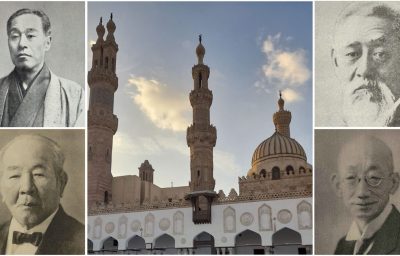COMMUNICATIONS
Exploring the History of Stone Sculptural Exchange
I am presently at Nichibunken studying cultural exchange between Song-Yuan China and Japan, using as sources Chinese stone sculptures extant in Japan. The sculptures to which I refer are known in Japanese academia as “Song-type stone sculptures.” It is noteworthy that these “Song-type stone sculptures” include not only stone sculptures made in China, but also imitations of them made in Japan. Both Chinese artisans then resident in Japan and Japanese artisans were responsible for these imitations. A history of the cultural exchange of stone sculptures weaves together the comings and goings of people, the trade in objects, and the exchange of technology that forms the backdrop to the production of these stone sculptures.
I have been fortunate to be able to engage in this research here at Nichibunken. The academic environment is outstanding. Nichibunken houses a huge number of sources, and provides access to the JapanKnowledge Lib database with which you can access ancient and medieval sources. More than anything, I have learned much from my exchange with Nichibunken academics. One day I was speaking to my sponsor, Professor Enomoto Wataru, about the number of days it would have taken to travel from Dazaifu in Kyushu, which was Japan’s gateway to continental culture, to Kyoto. About two hours later, I received a reply citing the relevant material from five different sources, including the Shōyūki and the Engishiki. In The Book of Changes, it says “The superior man learns and accumulates the results of his learning; puts questions, and discriminates among those results *1”. I have accumulated a great deal through my research at the hall of learning that is Nichibunken.

Fieldwork at the remains of Ryūfukuji temple in Ōmura City, Nagasaki Prefecture. (Photo by ŌISHI Kazuhisa)
For historical archaeologists, the most enjoyable thing is fieldwork on relics and ruins. In May of last year, I did fieldwork on the Kūkōgyōjyō monument *2 in the grounds of the Nison’in in Arashiyama. I asked an elderly gardener where the monument was, and he replied, “The place is difficult to find so let me take you there.” I supported the gardener as together we climbed to the monument, halfway up Mt. Ogura. He waved goodbye saying, “If you climb on up, you will get to the Ogura viewing platform. The vista from there is beautiful.” When I reached the viewing platform, I caught sight of the monument made by the stonemason Ryōseikaku, who hailed from Keigenfu (present day Ningbo). For me, this was the most beautiful site of all. Presumably I am the first person from Ningbo to have visited this site since 1253, the year in which the Kūkōgyōjyō monument was made. It may be that the monument was as moved by the encounter as I was.

The characters visible at the end of the inscription (rubbing) of the Kūkōgyōjyō monument:
“Made by the Song dynasty stonemason Ryōseikaku, who hailed from Keigenfu” (Photo by the author)
In June, Professor Enomoto introduced me to Dr. Kaibe Hiroshi, who discovered the Satsuma-tō *3 in Sakai. I had the opportunity to visit the Sakai City Museum, and see the Satsuma-tō for myself. It was the first to be discovered in Honshū. Dr. Kaibe showed me around, and we not only saw the actual Satsuma-tō, but were able to inspect the site where it was first located. We were joined by Brian Lander, associate professor of Brown University, and Julian Noah Tash and Ma Yunlei, both visiting research fellows at Nichibunken. Their expertise does not lie in the cultural history of stone sculptures, but I was able to learn from their opinions, which offered fresh perspectives. It goes without saying that this proved to be a meaningful trip.

The Satsuma-tō in the Sakai City Museum. To date, the sole Satsuma-tō discovered on Honshū. (Photo by the author)
I made many interesting discoveries through my research and various encounters at Nichibunken. I was able to see much natural and cultural beauty when I left Nichibunken for research or field work. The road along which I presently travel in search of the cultural exchange of stone sculptures extends far into the future.
<Those interested in the topic may consult the following>
*1 Excerpted from Qian in The Book of Changes
“The superior man learns and accumulates the results of his learning; puts questions, and discriminates among those results; dwells magnanimously and unambitiously in what he has attained to; and carries it into practice with benevolence.” (君子學以聚之、問以辯之、寬以居之、仁以行之)
(Translation by James Legge. The Chinese Text Project, URL: https://ctext.org)
*2 The Kūkōgyōjyō monument is a Song dynasty-style monument located in the grounds of Nison’in temple in Kyoto. It was made in 1253 (the fifth year of the Kenchō era). It stands at a height of 227cm, and it is thought to have been made by the stonemason Ryōseikaku. According to the inscription on the monument, he came to Japan from Keigen (present day Ningbo).
*3 The Satsuma-tō are stone monuments that came to Japan from China, distinguished by their jar-shaped body. (See the photograph of the Sakai Satsuma-tō.) They are estimated to date from between the end of the twelfth century and the mid-fourteenth century. Examples are scattered throughout northern, north-western and south-western Kyushu, but the only Honshū example is the one found at Sakai.





